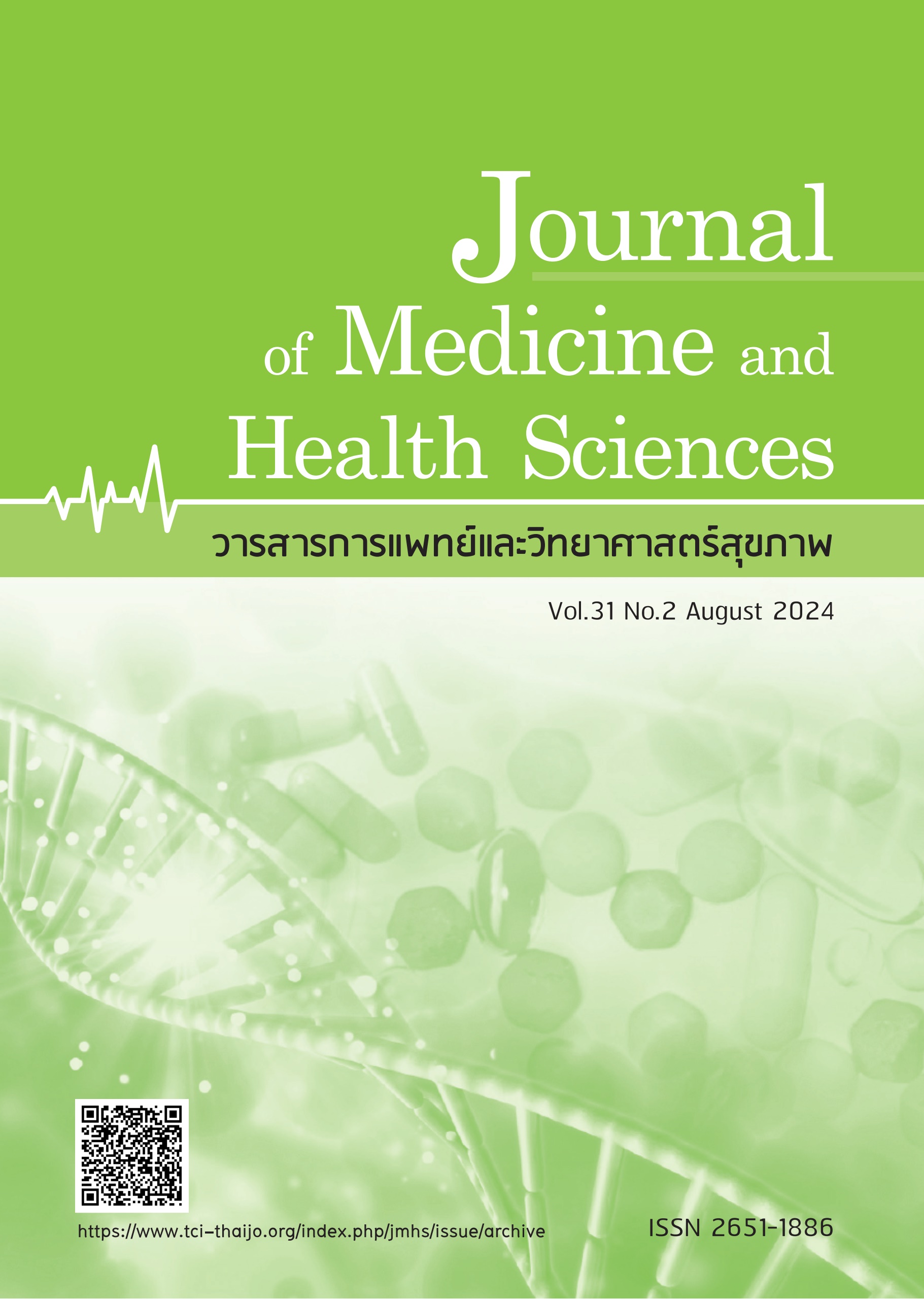Comparison of gastric insufflation during anesthetic induction between pressure-controlled and manual facemask ventilation in patients undergoing laparoscopic cholecystectomy
Keywords:
Gastric insufflation, gastric ultrasound assessment, laparoscopic cholecystectomy, manual facemask ventilation, pressure controlled facemask ventilationAbstract
For laparoscopic cholecystectomy good visibility of the surgical site is essential, therefore the prevention of gastric insufflation is important. In present study, we compared the incidence of gastric insufflation between pressure controlled and manual facemask ventilation during anesthetic induction. The research participants were 60 patients undergoing laparoscopic cholecystectomy were randomly allocated to pressure controlled facemask ventilation (PCV group) or manual facemask ventilation (MV group). In PCV group (n=30) received pressure controlled facemask ventilation at an inspiratory pressure of 13 cmH2O. In the MV group (n=30), the adjustable pressure limiting valve was set at 13 cmH2O. The incidence of gastric insufflation after ventilation was assessed by gastric ultrasonography and assessing through endoscopic view after started operation by surgeon. The tidal volume during facemask ventilation was also evaluated. The results of the study found the incidence of gastric insufflation assessed by ultrasonography was higher in manual facemask ventilation group than in pressure controlled facemask ventilation group (16.6% vs 6.6%, p-value = 1.45). However, there were not statistically different between the two groups. The tidal volume at 30s and 60s was significantly larger and adequate ventilation in the PCV group (461.5±76.7, 513.9±85.9) than in MV group (366.4±94.5, 400.3±101.6; p-value = 0.001, <0.001, respectively). Additionally, there were no significant differences between the two groups in surgical grade according to surgeon’s judgement. In conclusion pressure controlled facemask ventilation provide appropriate tidal volume compared with manual facemask ventilation at the same inspiratory pressure of 13 cmH2O. However, there was no significant difference in the incidence of gastric insufflation diagnosed with ultrasonography and laparoscopic view between these two ventilation methods.
References
Nagahisa Y, Hashida K, Matsumoto R, et al. A randomized clinical study on postoperative pain comparing between the supraglottic airway device and endotracheal tubing in transabdominal preperitoneal repair (TAPP). Hernia 2017;21(3):391-6.
Warchalowski L, Luszczki E, Bartosiewicz A, et al. The Analysis of Risk Factors in the Conversion from Laparoscopic to Open Cholecystectomy. Int J Environ Res Public Health 2020;17(20):7571.
Tianliang W, Gang S, Guocan Y, et al. Effect of facemask ventilation with different ventilating volumes on gastric insufflation during anesthesia induction in patients undergoing laparoscopic cholecystectomy. Saudi Med J 2019;40(10):989-95.
Okuyama M, Kato S, Sato S, et al. Dynamic behavior of the soft palate during nasal positive pressure ventilation under anaesthesia and paralysis: comparison between patients with and without obstructive sleep-disordered breathing. Br J Anaesth 2018;120(1):181-7.
Lee JH, Jung H, Kim EH, et al. Optimal inspiratory pressure for face mask ventilation in paralyzed and unparalyzed children to prevent gastric insufflation: a prospective, randomized, non-blinded study. Can J Anaesth 2018;65(12):1288-95.
Paal P, Neurauter A, Loedl M, et al. Effects of stomach inflation on hemodynamic and pulmonary function during cardiopulmonary resuscitation in pigs. Resuscitation 2009; 80: 365-71.
Seet MM, Soliman KM, Sbeih ZF. Comparison of three modes of positive pressure mask ventilation during induction of anaesthesia: a prospective, randomized, crossover study. Eur J Anaesthesiol 2009;26:913-6.
Lagarde S, Semjen F, Nouette-Gaulain K, et al. Facemask pressure-controlled ventilation in children: what is the pressure limit? Anesth Analg 2010;110:1676-9.
Ho-Tai LM, Devitt JH, Noel AG, et al. Gas leak and gastric insufflation during controlled ventilation: face mask versus laryngeal mask airway. Can J Anaesth 1998;45:206-11.
Park JH, Kim JY, Lee JM, et al. Manual vs. pressure-controlled facemask ventilation for anaesthetic induction in paralysed children: a randomised controlled trial. Acta Anaesthesiol Scand 2016;60:1075-83.
Bouvet L, Albert ML, Augris C, et al. Real-time detection of gastric insufflation related to facemask pressure-controlled ventilation using ultrasonography of the antrum and epigastric auscultation in nonparalyzed patients: a prospective, randomized, double-blind study. Anesthesiology 2014;120:326-34.
Wang M-H, Hang L-H. Appropriate pressure for facemask ventilation during induction of general anaesthesia in adult patients: measurement of antral cross-sectional area by real-time ultrasonography. Int J Clin Exp Med 2019;12(7):8999-9004.
Isono S, Eikermann M, Odaka T. Facemask ventilation during induction of anesthesia:how “gentle“is “gentle“enough? Anesthesiology 2014;120:263-5.
Hang L, Wei S, Zhenkai X, et al. Optimal pressure for facemask ventilation during induction of general anesthesia in adult patients:real-time ultrasonographic measurement of antral cross-sectional area. Chinese Journal of Anesthesiology 2017;37:461-3.
Lee JH, Jung H, Jang YE, et al. Manual vs pressure-controlled facemask ventilation during the induction of general anesthesia in children: A prospective randomized controlled study. Paediatr Anaesth 2019;29:331-7.
Jung YK, Kim CL, Jeong MA, et al. Gastric insufflation and surgical view according to mask ventilation method for laparoscopic cholecystectomy: a randomized controlled study. BMC Anesthesiol 2023;23:1-9.
Ikeda A, Isono S, Sato Y, et al. Effects of muscle relaxants on mask ventilation in anesthetized persons with normal upper airway anatomy. Anesthesiology 2012;117(3):487-93.
Cook TM, Woodall N, Frerk C. Fourth national audit project. Major complications of airway management in the UK: results of the Fourth national audit project of the royal college of anaesthetists and the difficult airway society. Part 1: anaesthesia. Br J Anaesth. 2011;106:617-31.
Horowitz M, Harding PE, Maddox AF, et al. Gastric and esophageal emptying in patients with type 2 (non-insulin-dependent) diabetes mellitus. Diabetologia. 1989;32(3):151-9.
Kruisselbrink R, Arzola C, Jackson T, et al. Ultrasound assessment of gastric volume in severely obese individuals: a validation study. Br J Anaesth. 2017;118(1):77-82.
Sharma S, Deo AS, Raman P. Effectiveness of standard fasting guidelines as assessed by gastric ultrasound examination: A clinical audit. Indian J Anaesth. 2018;62(10):747-52.
Downloads
Published
How to Cite
Issue
Section
License
Copyright (c) 2024 Journal of Medicine and Health Sciences

This work is licensed under a Creative Commons Attribution-NonCommercial-NoDerivatives 4.0 International License.



